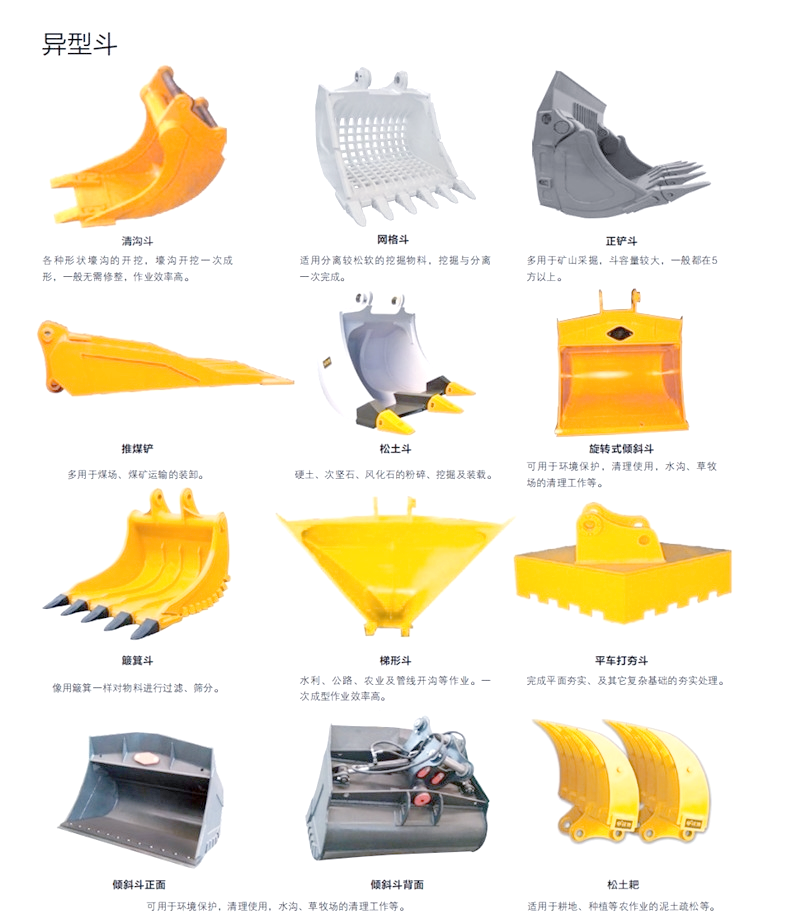Analysis of the Variety and Functions of Excavator Buckets
Excavator buckets come in various types and serve different functions. In daily operations, we often see buckets of different shapes and sizes, each carefully chosen according to specific working conditions. Let’s explore several common types of buckets and examine their unique functions and applicable scenarios.
No.1 Standard Bucket
The standard bucket, a common excavator accessory, is typically used for excavating ordinary clay and loading light materials such as sand, soil, and gravel. Its design is simple, with a large capacity and a high fill factor, providing excellent work efficiency. Additionally, its manufacturing cost is relatively low.
No.2 Reinforced Bucket
The reinforced bucket is built upon the standard bucket, with high-strength, wear-resistant steel material used to reinforce high-stress and easily worn areas. This bucket not only inherits many of the standard bucket’s advantages but also significantly improves strength and wear resistance, greatly extending its service life. The reinforced bucket is particularly suitable for digging hard soil, soft stone, and loading heavy materials like crushed stone and gravel.
No.3 Rock Bucket
The rock bucket is made from thicker plates, with special reinforcement in high-stress areas and additional strengthening ribs at the bottom. Furthermore, the wear-prone areas have thicker material, and side plates and protective plates are added to enhance its durability.
No.4 Mud Bucket
The mud bucket, also known as the dredging bucket, is specifically designed for river and ditch dredging. Its key features include the lack of bucket teeth and a wider design, making it highly suitable for reshaping slopes and flat surfaces or for dredging tasks in rivers and ditches.
No.5 Cement Bucket
The cement bucket is designed to excavate trenches of various shapes, meeting different work needs. With multiple choices of widths and shapes, such as trapezoidal, rectangular, and triangular, the cement bucket can flexibly adapt to various operational scenarios. Additionally, the trench formed by the cement bucket can be shaped in one go without further adjustment, greatly improving work efficiency.
No.6 Soil Loosening Bucket
The soil loosening bucket is designed for crushing, digging, and loading hard soil, semi-hard stone, and weathered stone. It is equipped with high-strength soil loosening teeth on the bucket, offering greater excavation force. Moreover, the loosening process is completed in one go, significantly improving operational efficiency.
No.7 Grate Bucket
The grate bucket resembles the standard bucket in appearance but features a grid-like design at the bottom, offering a larger capacity. Its primary function is separation, allowing for simultaneous excavation and separation work. This design makes the grate bucket widely used in municipal, agricultural, forestry, water conservancy, and earth-moving projects.
